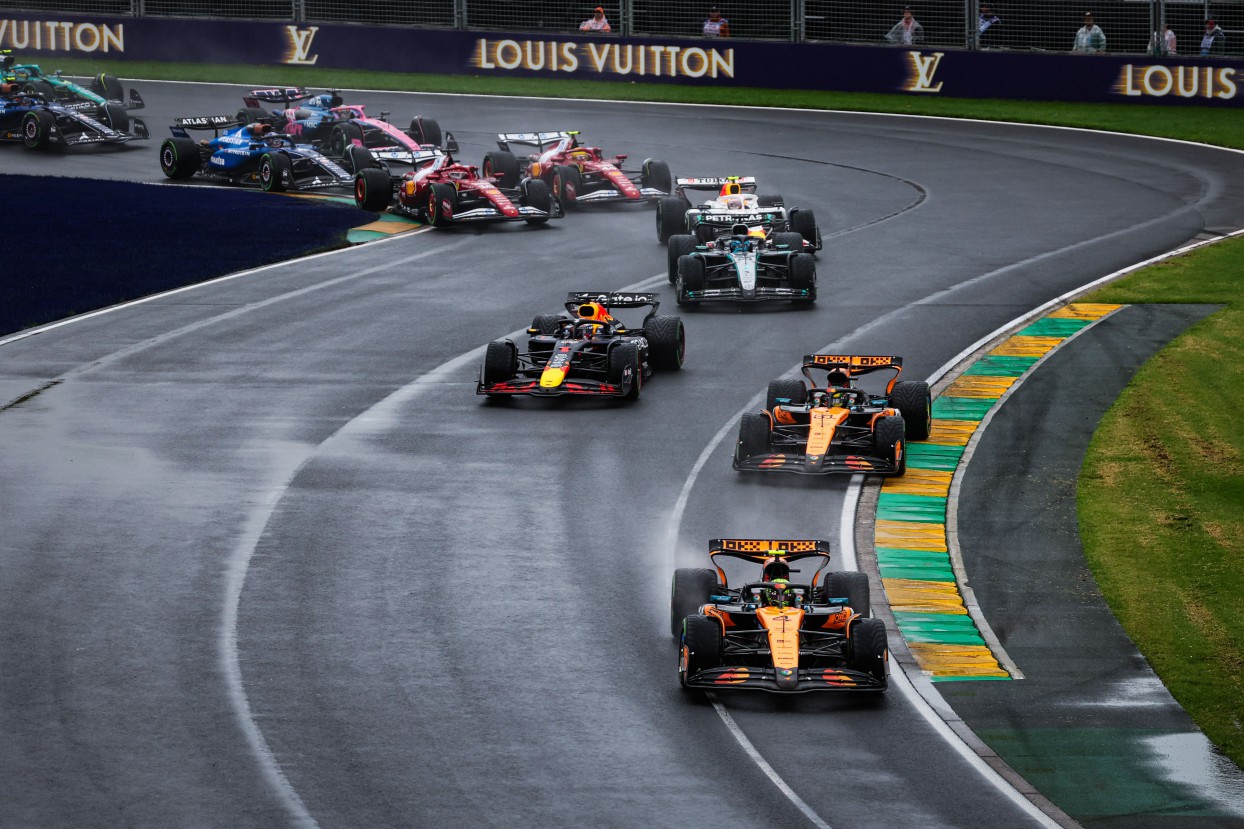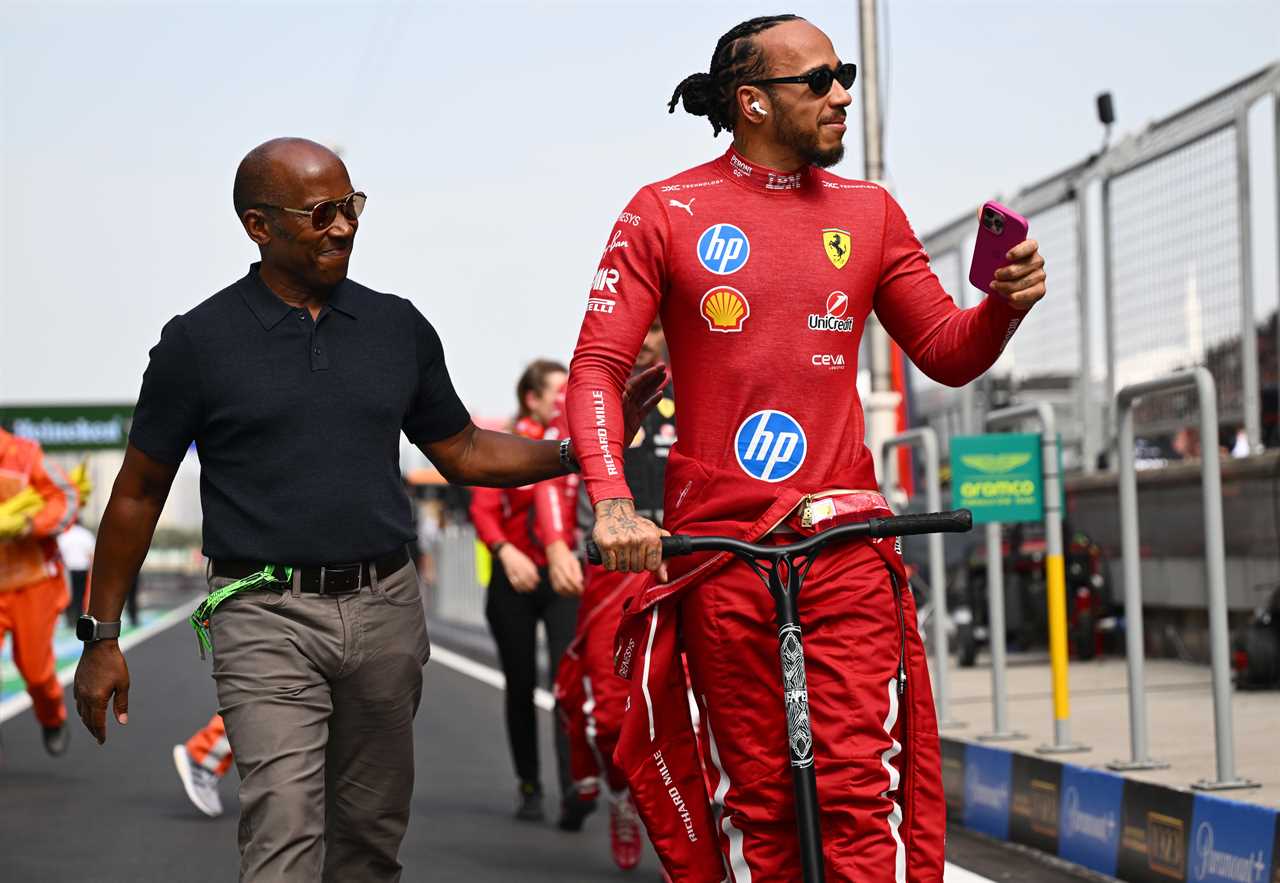
24 Exciting Grand Prix Await Fans
The Formula One 2025 season is set to roar back to life with 24 thrilling weekends on the calendar. Enthusiasts can look forward to the same iconic tracks from last year, ensuring a familiar yet fiercely competitive season.
Season Kick-Off Shakes Up the Calendar
While the venues remain unchanged, the sequence of races has undergone significant adjustments. Australia takes the lead as the opening race, replacing Bahrain from 2024. This marks a return to tradition, as Australia had traditionally opened the season before Covid disruptions shifted its position.
Ferrari’s Challenging Start
Lewis Hamilton has faced a rocky beginning with Ferrari, struggling to find his footing. Despite a solid performance in the opening race, Ferrari aims to regain momentum as the season progresses.
McLaren’s Strong Performance
McLaren has demonstrated formidable prowess early on, with Lando Norris securing the maiden victory and Oscar Piastri following suit in the second race. The team is positioning itself as a major contender this year.

Signature Races and Key Highlights
The season concludes similarly to 2024, with high-profile races in Las Vegas, Qatar, and Abu Dhabi. These final rounds are expected to deliver intense competition and memorable moments.
Silverstone Remains a July Highlight
Silverstone continues to hold its prestigious place in the calendar as the opening race of July. While the unpredictable British weather adds an element of uncertainty, the circuit remains a fan favorite.
Race Order Shuffles for Thrilling Dynamics
Rounds nine and ten, as well as thirteen and fourteen, have experienced reshuffles, bringing fresh dynamics to the competition. Spain now precedes Canada, offering Lewis Hamilton a chance to challenge Michael Schumacher's record for most victories at the Spanish Grand Prix.
Historic Circuits and Modern Challenges
Each track brings its unique challenges and history. Monaco remains a standout with its glamorous setting and tight corners, making overtaking a rare feat. In contrast, tracks like Monza and Imola offer high-speed excitement and rich historical significance.
Notable Drivers to Watch
Max Verstappen continues to be a dominant force, although recent races saw him face setbacks, including a collision at the Austrian Grand Prix. George Russell and Lando Norris are also in the spotlight, each striving for consistent performances throughout the season.
Emerging Storylines
The departure of Sergio Perez from Red Bull and the rise of Oscar Piastri add intriguing storylines to the season. Piastri’s victories and strategic plays make him a driver to keep an eye on as the championship unfolds.
Comprehensive Race Schedule
The full race schedule spans from March to December, covering diverse locations from Australia in March to Abu Dhabi in December. Each Grand Prix weekend includes practice sessions, qualifying rounds, and the main race, ensuring non-stop action for fans.
Key Dates and Venues
Starting on March 14 in Australia, the season progresses through Asia, Europe, North America, and concludes in the Middle East. Highlights include the sprint weekends in China, Miami, Belgium, the United States, and Brazil, adding extra excitement with shorter, high-stakes races.
Looking Ahead to the Finals
The final races in Las Vegas, Qatar, and Abu Dhabi are set to be decisive in determining the championship standings. With top drivers like Lewis Hamilton, Max Verstappen, and emerging talents pushing their limits, the 2025 season promises to deliver unforgettable racing moments.
What to Expect This Season
Expect fierce rivalries, strategic team maneuvers, and high-speed drama across all 24 Grand Prix events. Whether you're a long-time follower or a new fan, the 2025 Formula One season offers something for everyone, ensuring excitement from the first race to the last.
Stay Tuned for Action-Packed Weekends
With a well-balanced calendar and a mix of traditional and new races, the 2025 F1 season is poised to captivate audiences globally. Gear up for an exhilarating journey through the world’s premier motorsport championship.
Frequently Asked Questions
How much has hybrid power affected Formula 1 team costs since its introduction?
The advent of hybrid power systems in Formula 1 increased the complexity of the technology and consequently the cost associated with the sport. Development, production, and maintenance of these hybrid engines require significant investment, contributing to the rise in costs for teams since their introduction in 2014. This shift to hybrid technology has necessitated increased budgets for research and development to stay competitive in the hybrid era.
What is the impact of wind tunnel and simulator testing on a Formula 1 teams budget?
Formula 1 car development is not possible without wind tunnel testing and the use of simulators. The cost of wind tunnel usage can be up to $100,000 per day, while full-scale simulators may have an upfront cost of several million dollars. The annual maintenance and upgrades for these facilities can have a major impact on the team's budget.
Can Formula 1 Teams buy cars from other teams?
Formula 1 teams build and design their cars but they may purchase some components from rivals such as gearboxes or power units. Nevertheless, specific parts, such as the chassis and aerodynamic surface surfaces are required to be proprietary in order to ensure competition and diversity within the sport.
Statistics
- Since the introduction of hybrid power units in 2014, Formula 1 teams have seen a significant increase in costs related to engine development and maintenance.
- Formula 1 teams may spend up to $10 million on the engine alone, due to the high level of technology and performance required.
- Hosting a Formula 1 Grand Prix can cost a hosting circuit more than $70 million, including the sanctioning fees and the cost of preparations.
- The average cost to construct a Formula 1 car chassis is estimated to be between $10 million and $15 million.
- A Formula 1 team's pit stop equipment can cost between $100,000 to $500,000 for high precision and speed during the race.
- A Formula 1 car's carbon fiber body parts, essential for performance and safety, contribute significantly to the overall production costs of the vehicle.
- The cost of a full-scale Formula 1 simulator can reach several million dollars, with annual maintenance adding to the financial impact.
- Wind tunnel testing costs in Formula 1 can be as high as $100,000 per day, which is a critical part of car development.
External Links
How To
How to select Formula 1 aerodynamic Components
In order to choose Formula 1 aerodynamics components, a combination of wind tunnel tests and computational simulations is required. Work with aerodynamicists on balancing downforce requirements and drag reduction. Prioritize the components that balance car performance and stability on track. Continue to iterate these designs in the wind tunnels, validating their real-world effectiveness. Be aware that the regulations restrict the degree of aerodynamic modification during the season. Decisions must be well-founded and based on accurate data. To ensure compliance with regulations, manufacturers must be approved through F1’s homologation procedure.
Did you miss our previous article...
https://sportingexcitement.com/formula-1/f1-2025-a-starstudded-lineup-competes-for-championship-glory
 CricketBoxingFormula 1GolfHorse RacingPremier LeagueTennisPrivacy PolicyTerms And Conditions
CricketBoxingFormula 1GolfHorse RacingPremier LeagueTennisPrivacy PolicyTerms And Conditions
